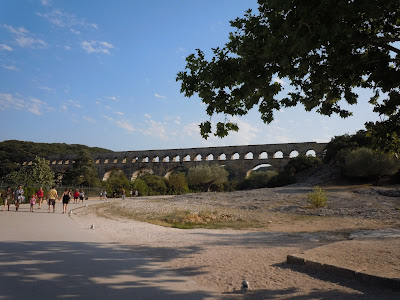 |
| Imagine my surprise and delight to find they had a pool in their front yard. |
 |
| Their place is close to the Pont du Gard, a roman bridge and aquaduct. There are several rental places up river--the signs say canoes but they kyakes. |

 |
| Olive tree, over 1000 years old and me, a mere 68. |
 |
| At the Saturday market in Uzes. |
 |
| Passed this field of sunflowers to and from the market in Uzes. |
 |
| Swimming beach on Mediterrerean with Lucette, Serge and the twin grandsons visiting from the US. |













































